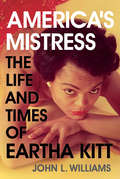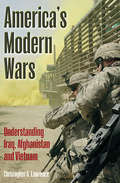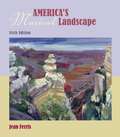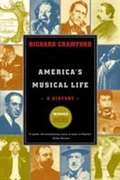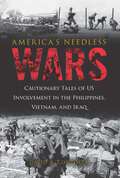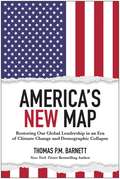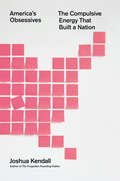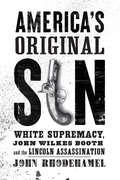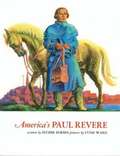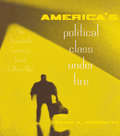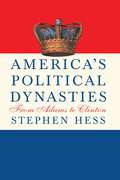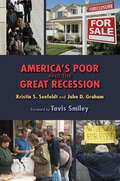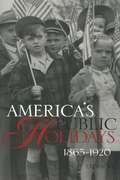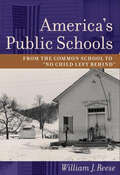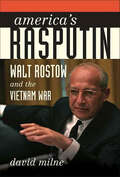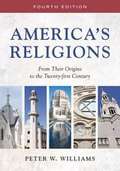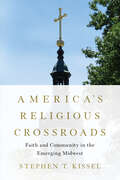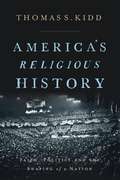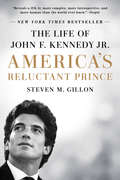- Table View
- List View
America's Mistress: The Life and Times of Miss Eartha Kitt
by John L. WilliamsStrait-laced, pre-civil rights America wasn't ready for Eartha Kitt. Waiting for others to be ready was never her style. in America's Mistress John L. Williams captures the person behind the myth in this engaging biography but also race relations in Twentieth-century America.From humble roots on a South Carolina cotton plantation, the multilingual, possibly multi-racial chanteuse emerged seemingly from nowhere to seduce the nation and redefine cosmopolitan glamour. Blending intellect, self-awareness and unprecedented sex appeal, she was a Technicolor presence in a black-and-white world. But the key to her allure was always her mystery, and her three not-entirely-consistent autobiographies raise more questions than they answer about who she really was--whether singing, dancing, acting or drawing headlines for her romantic dalliances and political activism. Drawing on extensive original research and interviews with the people who knew her best, Williams delivers a comprehensive, compassionate and thought-provoking record of a life that defied stereotypes, shattered boundaries, yet seemed to fall short of its potential in the end.America's Mistress is ultimately a celebration of a remarkable American life that paved the way for black entertainers from Belafonte to Beyoncé. With objectivity and thoroughness, John L. Williams provides sought-after answers to tantalizing and elusive questions.sex kitten.Whether or not her decline began with her 1968 infamous public confrontation with Lady Bird Johnson (that left the First Lady in tears), the later decades of Eartha's life were marked by America's growing indifference to the woman who once captured its attention like no one before or since.But America's Mistress is ultimately a celebration of a remarkable American life that paved the way for black entertainers from Belafonte to Beyoncé. With objectivity and thoroughness, John L. Williams provides sought-after answers to tantalizing and elusive questions.
America's Modern Wars: Understanding Iraq, Afghanistan, and Vietnam
by Christopher A. Lawrence&“A well researched and well analyzed study of the nature of insurgencies and guerilla warfare&” (Military Review). The fighting skills and valor of the US military and its allies haven&’t diminished over the past half-century—yet our wars have become more protracted and decisive results more elusive. With only two exceptions—Panama and the Gulf War under the first President Bush—our campaigns have taken on the character of endless slogs without positive results. This fascinating book takes a ground-up look at the problem to assess how our strategic objectives have become divorced from our true capability or imperatives. The book presents a unique examination of the nature of insurgencies and the three major guerrilla wars the United States has fought in Iraq, Afghanistan, and Vietnam. It is both a theoretical work and one that applies the hard experience of the past five decades to address the issues of today. As such, it also provides a timely and meaningful discussion of America&’s current geopolitical position. It starts with the previously close-held casualty estimate for Iraq that The Dupuy Institute compiled in 2004 for the US Department of Defense. Going from the practical to the theoretical, it then discusses a construct for understanding insurgencies and the contexts in which they can be fought. It applies these principles to Iraq, Afghanistan, and Vietnam, assessing where the projection of US power can enhance our position and where it merely weakens it. It presents an extensive analysis of insurgencies based upon a unique database of eighty-three post-WWII cases. The book explores what is important to combat and what is not important to resist in insurgencies. It builds a body of knowledge, based upon a half-century&’s worth of real-world data, with analysis, not opinion. In these pages, Christopher A. Lawrence, the President of The Dupuy Institute, provides an invaluable guide to how the US can best project its vital power while avoiding the missteps of the recent past. &“Provides a unique quantitative historical analysis . . . Logically estimating the outcomes of future military operations, as the author writes, is what US citizens should expect and demand from their leaders who take this country to war.&” —Military Review
America's Musical Landscape
by Jean FerrisThis textbook for music appreciation undergraduates surveys American music, relating it to the other arts and social and cultural contexts. Ferris (music history and appreciation, Arizona State U.) first explains the elements of music, then takes the reader on a chronological tour of American music, from North American Indian and folk music to contemporary mainstream concert music. Along the way, religious and secular music are discussed, as well as nineteenth century popular and concert music; country, folk, jazz, Latin music, and rock and roll; and musical theater, film music, and American opera. Listening charts are incorporated. This edition has been updated and reorganized, the amount of vernacular music has been expanded, and the recordings have been updated to match. Timelines are also new. No bibliography is provided. Annotation ©2006 Book News, Inc., Portland, OR (booknews.com)
America's Musical Life: A History
by Richard CrawfordAn Introduction to America's Music tells the fascinating story of music in the United States, from the sacred music of its earliest days to the jazz and rock that enliven the turn of the millennium. Beginning with the music of Native Americans and continuing with traditions introduced by European colonizers and Africans brought here as slaves, the book reveals how this bountiful heritage was developed and enhanced in the nineteenth and twentieth centuries to produce the music we hear today.
America's Needless Wars: Cautionary Tales of US Involvement in the Philippines, Vietnam, and Iraq
by David R. ContostaThis eye-opening book takes a unique approach to the history of U.S. foreign policy by examining three unrelated conflicts, all of which ended tragically and resulted in the deaths of millions on both sides. By analyzing what went wrong in each case, the author uncovers a pattern of errors that should serve as a precaution for future decision makers contemplating a conflict abroad. Why did President McKinley oppose Filipino independence forces if his motivation was truly to help Filipinos overthrow Spanish domination? Why did several U.S. presidents ignore the failures of the French in Vietnam and reject peace overtures from popular revolutionary leader Ho Chi Minh to bring the conflict to an early end? And how could American leaders have been so wrong about Saddam Hussein's alleged weapons of mass destruction and then let Iraq devolve into chaos after overthrowing the dictator? Historian David R. Contosta has sifted through official hearings, media investigations, public documents, memoirs of those for and against the conflicts, and numerous histories to uncover the answers to these questions. The common thread that links these wars from different centuries is that political leaders all too often have acted out of ignorance, arrogance, fear, and partisan gamesmanship. These lapses were compounded by the failure of the media to inform the public accurately and dispassionately. The sad result is that America has paid a high price in lost lives and tarnished national reputation. As the author notes in conclusion, if American exceptionalism is to have any meaning, then we must honestly appraise our past foreign-policy blunders to ensure wiser political action in the future.
America's New Downtowns: Revitalization or Reinvention? (Creating the North American Landscape)
by Larry R. FordWhat makes a good downtown, and why? Are today's downtowns, with their waterfront parks, festival markets, sports arenas, and cultural centers, more vibrant and lively than the "central business districts" of the nineteenth and early twentieth centuries? Was there ever a "golden age" of downtowns? In this book, noted urban scholar Larry Ford casts a critical and practiced eye on sixteen contemporary urban centers to offer an expert's view of the best―and worst―of downtown America. Ford begins with a brief history of U.S. urban development. He then explains his criteria for evaluating downtowns before proceeding with an on-the-street examination of the featured sixteen cities. Each is rated based on use of physical site, particularly for housing (unlike suburbs, Ford notes, most downtowns are located in challenging physical locales, such as harbors, rivers, hills, or peninsulas), street morphology, civic space, functional aspects (office space, retail stores, and convention centers), and the support districts in the fringe areas surrounding the downtown core. Ford concludes with a suggested model of downtown structure based upon the case studies and with a look at the possible effects of increasing globalization on the downtowns of the late twenty-first century. This book will appeal to those interested in urban studies, landscape studies, American studies, architecture, historic preservation and planning, and urban geography. Featured cities: Atlanta, Baltimore, Charlotte, Cleveland, Columbus, Denver, Indianapolis, Minneapolis, Phoenix, Pittsburgh, Portland, Providence, San Antonio, San Diego, Seattle, and St. Louis
America's New Empire: The 1890s and Beyond
by Richard F. HamiltonIn this volume, Hamilton deals with some of the antecedents and the outcome of the Spanish-American war, specifically, the acquisition of an American empire. It critiques the "progressive" view of those events, questioning the notion that businessmen (and compliant politicians) aggressively sought new markets, particularly those of Asia. Hamilton shows that United States' exports continued to go, predominantly, to the major European nations. The progressive tradition has focused on empire, specifically on the Philippines depicted as a stepping stone to the China market. Hamilton shows that the Asian market remained minuscule in the following decades, and that other historical works have neglected the most important change in the nation's trade pattern, the growth of the Canada market, which two decades after the 1898 war, became the United States' largest foreign market.The book begins with a review and criticism of the basic assumptions of the progressive framework. These are, first, that the nation is ruled by big business (political leaders being compliant co-workers). Second, that those businessmen are zealous profit seekers. And third, that they are well-informed rational decision-makers. A further underlying assumption is that the economy was not functioning well in the 1890s and that a need for new markets was recognized as an urgent necessity, so that big business, accordingly, demanded world power and empire. Each of these assumptions, pivotal elements in the dominant progressive tradition in historical writing, is challenged, with an alternative viewpoint presented.Hamilton presents a different, more complex view of the events following the Spanish-American War. The class-dominance theory is not supported. The alternative argued here, elitism, proves appropriate and more useful. This review and assessment of arguments about American expansion in the 1890s adds much to the literature of the period.
America's New Map: Restoring Our Global Leadership in an Era of Climate Change and Demographic Collapse
by Thomas P.M. BarnettThree tectonic and inevitable shifts have left the world at a crossroads. North America is poised to either re-emerge as a global leader, or turn back in time, ceding power and influence to competitors. The 21st century unleashed unprecedented changes across the globe—to its climate, to the demographic makeup of its nations, and to the very nature of allegiance in the digital age. With its global influence waning, America must reevaluate its approach to globalization if it wishes to remain a leader. In America&’s New Map: Restoring Global Leadership in an Era of Climate Change and Demographic Collapse, Thomas P.M. Barnett, bestselling author of The Pentagon&’s New Map: War and Peace in the Twenty-First Century and acclaimed geo-strategist, offers seven throughlines to frame and redefine the ambitions and posture of these United States, setting our Union on a bold-but-entirely-familiar national trajectory. In these pages, Barnett offers a deep, yet accessible dive into the three shifts that have lead us to this point: As climate change ravages countries closest to the equator, global dynamics are shifting from an East-West emphasis to North-South in the greatest geopolitical transformation our world has yet experienced—and the Western Hemisphere is far better positioned to exploit this radical reorientation than the East. Aging demographics worldwide favor more slowly aging nations, including the US, while challenging rapidly aging nations like China, incentivizing countries best to delay that transition by integrating younger, faster-growing populations into their ranks. In combination, these two tectonic forces collide with a third: the exploding consumption of an expanding—and now majority—global middle class, the bulk of whom reside along the increasingly unstable North-South frontier. Taking every variable of these unique circumstances into account, America&’s New Map charts a path toward a bigger and better United States. We will all be living in somebody&’s world come mid-century—this book tells Americans how to make sure it is one we can recognize as our own.
America's Obsessives: The Compulsive Energy That Built a Nation
by Joshua KendallWhen most of us think of Charles Lindbergh, we picture a dashing twenty-five-year-old aviator stepping out of the Spirit of St. Louis after completing his solo flight across the Atlantic. What we don't see is the awkward high school student, who preferred ogling new gadgets at the hardware store to watching girls walk by in their summer dresses. Sure, Lindbergh's unique mindset invented the pre-flight checklist, but his obsession with order also led him to demand that his wife and three German mistresses account for all their household expenditures in detailed ledgers.Lucky Lindy is just one of several American icons whom Joshua Kendall puts on the psychologist's couch in AMERICA'S OBSESSIVES. In this fascinating look at the arc of American history through the lens of compulsive behavior, he shows how some of our nation's greatest achievements-from the Declaration of Independence to the invention of the iPhone-have roots in the disappointments and frustrations of early childhood.Starting with the obsessive natures of some of Silicon Valley's titans, including Steve Jobs, Kendall moves on to profile seven iconic figures, such as founding father Thomas Jefferson, licentious librarian Melvil Dewey, condiment kingpin H. J. Heinz, slugger Ted Williams, and Estee Lauder. This last personality was so obsessed with touching other women's faces that she transformed her compulsion into a multibillion-dollar cosmetics corporation.Entertaining and instructive, Kendall offers up a few scoops along the way: Little do most Americans know that Charles Lindbergh, under the alias Clark Kent, sired seven children with his three German "wives." As Lindbergh's daughter Reeve told Kendall, "Now I know why he was gone so much. I also understand why he was delighted when I was learning German."
America's Original Sin: White Supremacy, John Wilkes Booth, and the Lincoln Assassination
by John RhodehamelFinally, a compelling narrative history of the Lincoln assassination that refuses to ignore John Wilkes Booth's motivation: his growing, obsessive commitment to white supremacy.On April 14, 1865, after nearly a year of conspiring, John Wilkes Booth shot Abraham Lincoln as the president watched a production of Our American Cousin at Ford's Theatre. Lincoln died the next morning. Twelve days later, Booth himself was fatally shot by a Union soldier after an extensive manhunt. The basic outline of this story is well known even to schoolchildren; what has been obscured is Booth's motivation for the act, which remains widely misunderstood nearly 160 years after the shot from his pocket pistol echoed through the crowded theater. In this riveting new book, John Rhodehamel argues that Booth's primary motivation for his heinous crime was a growing commitment to white supremacy. In alternating chapters, America's Original Sin shows how, as Lincoln's commitment to emancipation and racial equality grew, so too did Booth's rage and hatred for Lincoln, whom he referred to as "King Abraham Africanus the First." Examining Booth's early life in Maryland, Rhodehamel traces the evolution of his racial hatred from his youthful embrace of white supremacy through to his final act of murder. Along the way, he considers and discards other potential motivations for Booth's act, such as mental illness or persistent drunkenness, which are all, Rhodehamel writes, either insufficient to explain Booth's actions or were excuses made after the fact by those who sympathized with him.Focusing on how white supremacy brought about the Civil War and, later, betrayed the conflict's emancipationist legacy, Rhodehamel's masterful narrative makes this old story seem new again. The first book to explicitly name white supremacy as the motivation for Lincoln's assassination, America's Original Sin is an important and eloquent look at one of the most notorious episodes in American history.
America's Past and Promise
by Lorna C. MasonAmerica's Past and Promise deals primarily with the nation's past. It represents the future promise of America and thus makes the students know of America's past and will help them fulfill the America's promise.
America's Past and Promise: Beginnings through Reconstruction
by Jesus Garcia C. Frederick Risinger Lorna Mason Frances PowellThis book is about people--the people of our nation's past. You'll hear them speak, see how they lived, and follow them through history as they build the United States. Why is this book fun to use? Read it and see!
America's Paul Revere
by Esther Hoskins ForbesA vivid history of one of America's best-loved patriots.
America's Philosopher: John Locke in American Intellectual Life
by Claire Rydell ArcenasAmerica’s Philosopher examines how John Locke has been interpreted, reinterpreted, and misinterpreted over three centuries of American history. The influence of polymath philosopher John Locke (1632–1704) can still be found in a dizzying range of fields, as his writings touch on issues of identity, republicanism, and the nature of knowledge itself. Claire Rydell Arcenas’s new book tells the story of Americans’ longstanding yet ever-mutable obsession with this English thinker’s ideas, a saga whose most recent manifestations have found the so-called Father of Liberalism held up as a right-wing icon. The first book to detail Locke’s trans-Atlantic influence from the eighteenth century until today, America’s Philosopher shows how and why interpretations of his ideas have captivated Americans in ways few other philosophers—from any nation—ever have. As Arcenas makes clear, each generation has essentially remade Locke in its own image, taking inspiration and transmuting his ideas to suit the needs of the particular historical moment. Drawing from a host of vernacular sources to illuminate Locke’s often contradictory impact on American daily and intellectual life from before the Revolutionary War to the present, Arcenas delivers a pathbreaking work in the history of ideas.
America's Political Class Under Fire: The Twentieth Century's Great Culture War
by David A. HorowitzFirst Published in 2003. Routledge is an imprint of Taylor & Francis, an informa company.
America's Political Dynasties
by Stephen HessThe Constitution states that "no title of nobility shall be granted by the United States," yet it seems political nobility is as American as apple pie.As Hess illustrates, while there always have been dynasties in America, they have not always been the same families: Dynasties are born and dynasties die, their rise and fall is part of the flux of a constantly changing political scene.America was founded in rebellion against nobility and inherited status. Yet from the start, dynastic families have been conspicuous in national politics. The Adamses. The Lodges. The Tafts. The Roosevelts. The Kennedys. And today the Bushes and the Clintons.Longtime presidential historian Stephen Hess offers an encyclopedic tour of the families that have loomed large over America's political history.Starting with John Adams, who served as the young nation's first vice president and earned the nickname "His Rotundity," Hess paints the portraits of the men and women who, by coincidence, connivance, or sheer sense of duty, have made up America's political elite. There are the well-known dynasties such as the Roosevelts and the Kennedys, and the names that live on only in history books, such as the Bayards (six generations of U.S. senators) and the Breckinridges (a vice president, two senators, and six representatives).Hess fills the pages of America's Political Dynasties with anecdotes and personality-filled stories of the families who have given the United States more than a fair share of its presidents, senators, governors, ambassadors, and cabinet members.This book also tells us the stories of the Bushes and what looks to be a political dynasty in waiting, the Clintons. Emblematic of America's growing diversity, Hess also examines how women, along with ethnic and racial minorities, have joined the ranks of dynastic political families.
America's Poor and the Great Recession
by John D. Graham Kristin S. Seefeldt&“A thorough and enlightening survey of the impact and legacy of the Great Recession on low-income Americans . . . accessible and readable.&” —Journal of American Studies Millions entered poverty as a result of the Great Recession&’s terrible toll of long-term unemployment. In this book, Kristin S. Seefeldt and John D. Graham examine recent trends in poverty and assess the performance of America&’s safety-net programs. They consider likely scenarios for future developments and conclude that the well-being of low-income Americans, particularly the working poor, the near poor, and the new poor, is at substantial risk despite economic recovery. &“[This] primer on the state of America&’s poor in the wake of the Great Recession of 2007 to 2009 cuts through Beltway theater and provides a clear picture of the magnitude of poverty of the United States as well as the patchwork nature of social services targeting the poor.&” —Journal of Policy Analysis and Management
America's Public Holidays
by Ellen M. LitwickiFrom the revered Memorial Day to the forgotten Lasties Day, America's Public Holidays is a timely and thoughtful analysis of how the civic culture of America has been fashioned. By analyzing how holidays became a forum for expressing patriotism, how public tradition has been invented, and how the definition of America itself was changed, Ellen Litwicki tells the intriguing story of the elite effort to create new holidays and the variety of responses from ordinary Americans.
America's Public Schools: From the Common School to "No Child Left Behind" (The American Moment)
by William J. ReeseIn this update to his landmark publication, William J. Reese offers a comprehensive examination of the trends, theories, and practices that have shaped America’s public schools over the last two centuries. Reese approaches this subject along two main lines of inquiry—education as a means for reforming society and ongoing reform within the schools themselves. He explores the roots of contemporary educational policies and places modern battles over curriculum, pedagogy, race relations, and academic standards in historical perspective.A thoroughly revised epilogue outlines the significant challenges to public school education within the last five years. Reese analyzes the shortcomings of "No Child Left Behind" and the continued disjuncture between actual school performance and the expectations of government officials. He discusses the intrusive role of corporations, economic models for enticing better teacher performance, the continued impact of conservatism, and the growth of home schooling and charter schools. Informed by a breadth of historical scholarship and based squarely on primary sources, this volume remains the standard text for future teachers and scholars of education.
America's Rasputin: Walt Rostow and the Vietnam War
by David MilneWalt Rostow's meteoric rise to power -- from Flatbush, Brooklyn, to the West Wing of the White House -- seemed to capture the promise of the American dream. Hailing from humble origins, Rostow became an intellectual powerhouse: a professor of economic history at MIT and an influential foreign policy adviser to John F. Kennedy and Lyndon B. Johnson. Too influential, according to some. While Rostow inspired respect and affection, he also made some powerful enemies. Averell Harriman, one of America's most celebrated diplomats, described Rostow as "America's Rasputin" for the unsavory influence he exerted on presidential decision-making. Rostow was the first to advise Kennedy to send U.S. combat troops to South Vietnam and the first to recommend the bombing of North Vietnam. He framed a policy of military escalation, championed recklessly optimistic reporting, and then advised LBJ against pursuing a compromise peace with North Vietnam. David Milne examines one man's impact on the United States' worst-ever military defeat. It is a portrait of good intentions and fatal misjudgments. A true ideologue, Rostow believed that it is beholden upon the United States to democratize other nations and do "good," no matter what the cost. America's Rasputin explores the consequences of this idealistic but unyielding dogma.
America's Rasputin: Walt Rostow and the Vietnam War
by David MilneDavid Milne's America's Rasputin provides the first major study of the man who pushed two presidents into Vietnam.Walt Rostow's meteoric rise to power—from Flatbush, Brooklyn, to the West Wing of the White House—seemed to capture the promise of the American dream. Hailing from humble origins, Rostow became an intellectual powerhouse: a professor of economic history at MIT and an influential foreign policy adviser to John F. Kennedy and Lyndon B. Johnson. Too influential, according to some. While Rostow inspired respect and affection, he also made some powerful enemies. Averell Harriman, one of America's most celebrated diplomats, described Rostow as "America's Rasputin" for the unsavory influence he exerted on presidential decision-making. Rostow was the first to advise Kennedy to send U.S. combat troops to South Vietnam and the first to recommend the bombing of North Vietnam. He framed a policy of military escalation, championed recklessly optimistic reporting, and then advised LBJ against pursuing a compromise peace with North Vietnam. David Milne examines one man's impact on the United States' worst-ever military defeat. It is a portrait of good intentions and fatal misjudgments. A true ideologue, Rostow believed that it is beholden upon the United States to democratize other nations and do "good," no matter what the cost. America's Rasputin explores the consequences of this idealistic but unyielding dogma.
America's Religions: From Their Origins to the Twenty-first Century (3rd edition)
by Peter W. WilliamsIn this comprehensive survey, Williams offers concise descriptions of the background, beliefs, practices, and leaders of America's most influential and distinctive religious movements and denominations. Thoroughly revised and updated, this third edition of America's Religions incorporates the latest scholarship on religion and considers timely issues such as status of Muslims in the United States after September 11, 2001; the impact of religion on American politics, especially concerning the emergence of the Religious Right; and the intense battles fought within the Catholic Church and other denominations over the status of gay marriage and accusations of clergy members' sexual abuse. This edition also includes thirty-eight new illustrations of key persons in American religious history and notable places of worship.
America's Religious Crossroads: Faith and Community in the Emerging Midwest
by Stephen T. KisselBetween 1790 and 1850, waves of Anglo-Americans, African Americans, and European immigrants flooded the Old Northwest (modern-day Ohio, Indiana, Michigan, Illinois, and Wisconsin). They brought with them a mosaic of Christian religious belief. Stephen T. Kissel draws on a wealth of primary sources to examine the foundational role that organized religion played in shaping the social, cultural, and civic infrastructure of the region. As he shows, believers from both traditional denominations and religious utopian societies found fertile ground for religious unity and fervor. Able to influence settlement from the earliest days, organized religion integrated faith into local townscapes and civic identity while facilitating many of the Old Northwest's earliest advances in literacy, charitable public outreach, formal education, and social reform. Kissel also unearths fascinating stories of how faith influenced the bonds, networks, and relationships that allowed isolated western settlements to grow and evolve a distinct regional identity. Insightful and broad in scope, America’s Religious Crossroads illuminates the integral relationship between communal and spiritual growth in early Midwestern history.
America's Religious History: Faith, Politics, and the Shaping of a Nation
by Thomas S. KiddReligion, race, and American history.America's Religious History is an up-to-date, narrative-based introduction to the unique role of faith in American history. Moving beyond present-day polemics to understand the challenges and nuances of our religious past, leading historian Thomas S. Kidd interweaves religious history and key events from the larger story of American history, including:The Great AwakeningThe American RevolutionSlavery and the Civil WarCivil rights and church-state controversyImmigration, religious diversity, and the culture warsUseful for both classroom and personal study, America's Religious History provides a balanced, authoritative assessment of how faith has shaped American life and politics.
America's Reluctant Prince: The Life of John F. Kennedy Jr.
by Steven M. Gillon*A New York Times Bestseller*A major new biography of John F. Kennedy Jr. from a leading historian who was also a close friend, America&’s Reluctant Prince is a deeply researched, personal, surprising, and revealing portrait of the Kennedy heir the world lost too soon. Through the lens of their decades-long friendship and including exclusive interviews and details from previously classified documents, noted historian and New York Times bestselling author Steven M. Gillon examines John F. Kennedy Jr.&’s life and legacy from before his birth to the day he died. Gillon covers the highs, the lows, and the surprising incidents, viewpoints, and relationships that John never discussed publicly, revealing the full story behind JFK Jr.&’s complicated and rich life. In the end, Gillon proves that John&’s life was far more than another tragedy—rather, it&’s the true key to understanding both the Kennedy legacy and how America&’s first family continues to shape the world we live in today.
